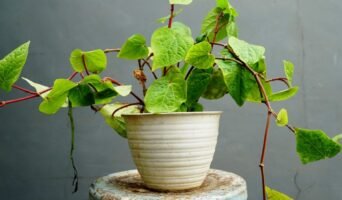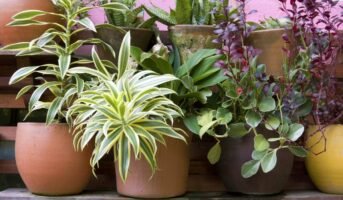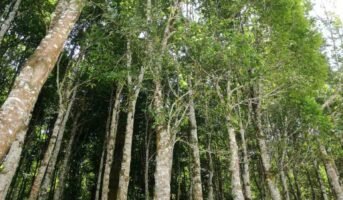Gliricidia sepium or Mexican lilac is a flexible, quickly growing, and prodigiously seeding tree having the capacity to distribute seeds from exploding pods up to 40 m from the parent tree. In tropical and subtropical areas, this species has been widely introduced for use as fuel wood, animal feed, green manure, shade, poles, living fences, erosion control, soil improvement, and as a boundary and support plant.
It has successfully colonised disturbed sites, wayside vegetation, vacant farmland, and regions close to cultivation after escaping from cultivation.
Gliricidia sepium: Facts
| Flowering | November- January |
| Plant Family | Fabaceae |
| Common Name | Cocoite (Central America), kakawati (Philippines), gamal (Indonesia), fast stick (Jamaica), Mexican lilac |
| Height | 10-12 m |
| Order | Fabales |
| Plant | Shrub |
| Leaf | 40 to 80 mm long |
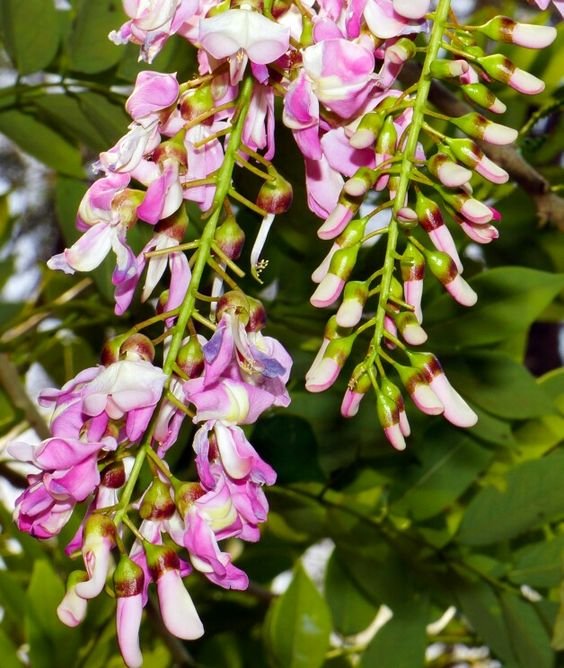
Source: Pinterest
Gliricidia sepium: Leaves and flowers
Leaves: Imparipinnate leaves with oblong, blunt-tipped leaflets that are covered in fine hairs and have black spots below, are deciduous in winter when the tree is in bloom.
Flowers: Clusters of pinkish purple or pale pink flowers are seen on tall stems. A lobed calyx., large, upright, backward-curving standard, two wings in the shape of sickles, and an incurving keel-petal describe the corolla.
Gliricidia sepium: How to grow?
Soil
Shallow, mildly saline, mildly sodic, and moderately infertile soils are all suitable for gliricidia growth. Additionally, it may survive on calcareous soils like atolls.
Seeds
The seeds of gliricidia are steeped in water for 8 to 10 hours, ideally overnight. Small polythene bags filled with red soil, sand, and farmyard manure (1:1:1) are used to sow the soaked seeds, and the plants are then routinely watered. In general, seedlings that are three to four months old can be planted on bunds during the wet season. The method of seed propagation is more practical for growing several plants.
Planting
During the wet season, gliricidia stem cuttings or 3- to 4-month-old seedlings can be planted on bunds with a 50 cm spacing. For incline slopes, it is advised to space plants 20 cm apart or closer.
See also: What is Hibiscus and how to grow it in your home?
Gliricidia sepium: Maintenance tips
Sunlight
The plant thrives in direct sunlight. Even though they can live, heavily shaded seedlings won’t thrive. If the sheltering overstory is removed, seedlings that have been stunted by shade for even three to four years will recover and grow quickly.
Pruning
By cutting the plants at 75 cm above the ground, harvesting can begin a year after planting. Plants should be clipped at the proper time for effective management. At least three times a year, in June (before planting the crop for the rainy season), November (before planting the crop for the post-rainy season), and March, pruning should be done (before sowing of the summer crop).
Gliricidia sepium: Uses
Living fence: The most prevalent species used for a living fence in the tropics may be Gliricidia sepium. Large stakes are used to build fence posts. They could be spaced 1 to 2 metres apart and connected with bamboo or barbed wire. Alternatively, they could be planted as a stockade with their branches intertwined, spaced 10 to 20 cm apart. Fences can be used to harvest green manure, forage, fuelwood, and stakes.
Fuelwood: The wood has a specific gravity of 0.5 to 0.8 and is tough and long-lasting. It has a calorific value of 4,900 kcal/kg and is a good fuel, burning cleanly and without sparks. Gliricidia woodlots, secondary forests, and natural stands have all been managed for the purpose of producing commercial fuel. Additionally, the wood is used to make poles, furniture, agricultural implements, and lumber.
Fodder: Gliricidia responds well to regular cutting and generates large amounts of nutrient-rich fodder with a crude protein content of 18 to 30%. The feed works well for livestock. Although some animals are hesitant to consume gliricidia, training may help. Once gliricidia is tolerated, succeeding generations will happily eat it. Non-ruminants have been associated with toxicity issues. Coppice growth can be preserved for use as dry-season feed by pruning trees before the dry season.
Farming methods: The nitrogen-rich leaf increases crop productivity when applied as mulch or green manure because it adds nutrients, controls weeds, retains moisture, and lowers soil temperature. Typically, the cropping area’s hedgerows or fences provide leaf biomass. Paddy and upland rice, corn, cassava, and coconuts are examples of companion crops. On sloping farmland, hedgerows are utilised to prevent erosion and create passive terraces. The management of hedgerows should reduce crop competition.
See also: Rose flower: 30+ images and over 20 interesting facts about the heavenly flower
Gliricidia sepium: Benefits
- This multipurpose legume tree reduces soil erosion, boosts soil productivity and yields, and controls pollution brought on by the use of chemical fertilisers.
- The greatest benefit is Gliricidia’s contribution to sustainable agricultural output.
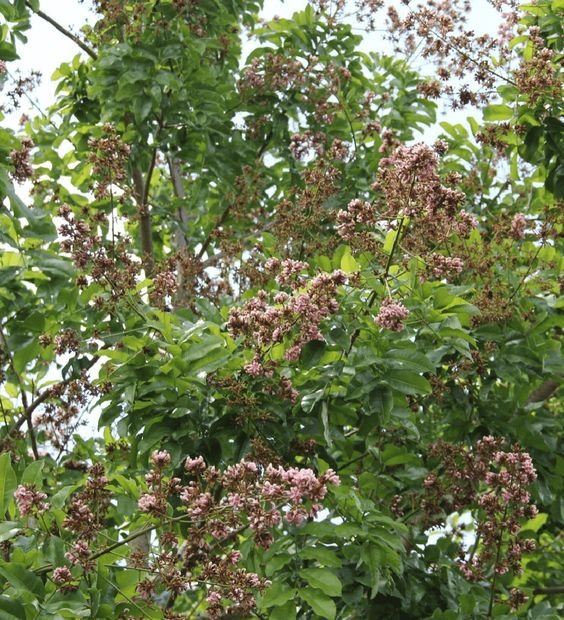
Source: Pinterest
FAQs
Is Gliricidia sepium toxic?
When combined with cooked rice or maize and fermented, the leaves, seeds, or powdered bark is hazardous to humans.
What is Gliricidia sepium used for?
Farmers choose the adaptable, quick-growing gliricidia sepium tree for living fences, fuel, fodder, green manure, shade, crop support, and erosion control.
Housing News Desk is the news desk of leading online real estate portal, Housing.com. Housing News Desk focuses on a variety of topics such as real estate laws, taxes, current news, property trends, home loans, rentals, décor, green homes, home improvement, etc. The main objective of the news desk, is to cover the real estate sector from the perspective of providing information that is useful to the end-user.
Facebook: https://www.facebook.com/housing.com/
Twitter: https://twitter.com/Housing
Email: [email protected]


